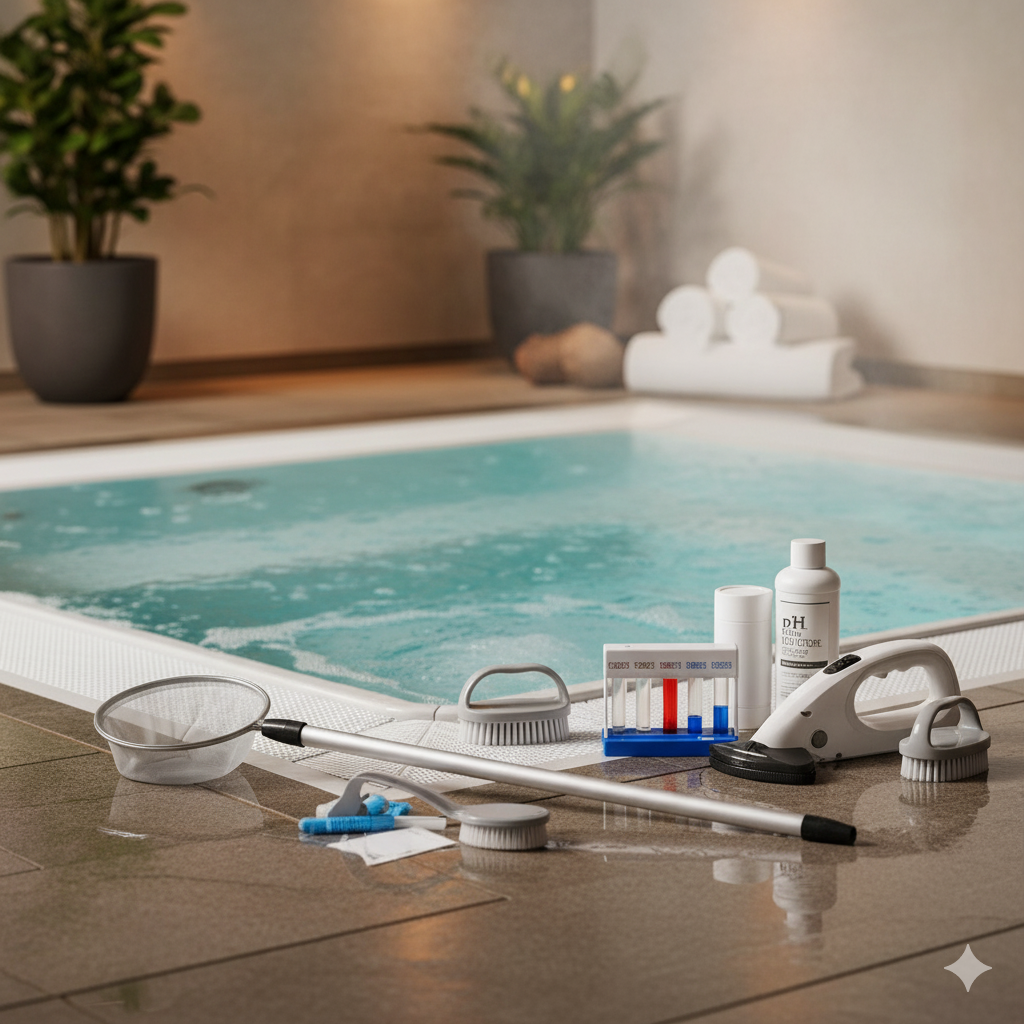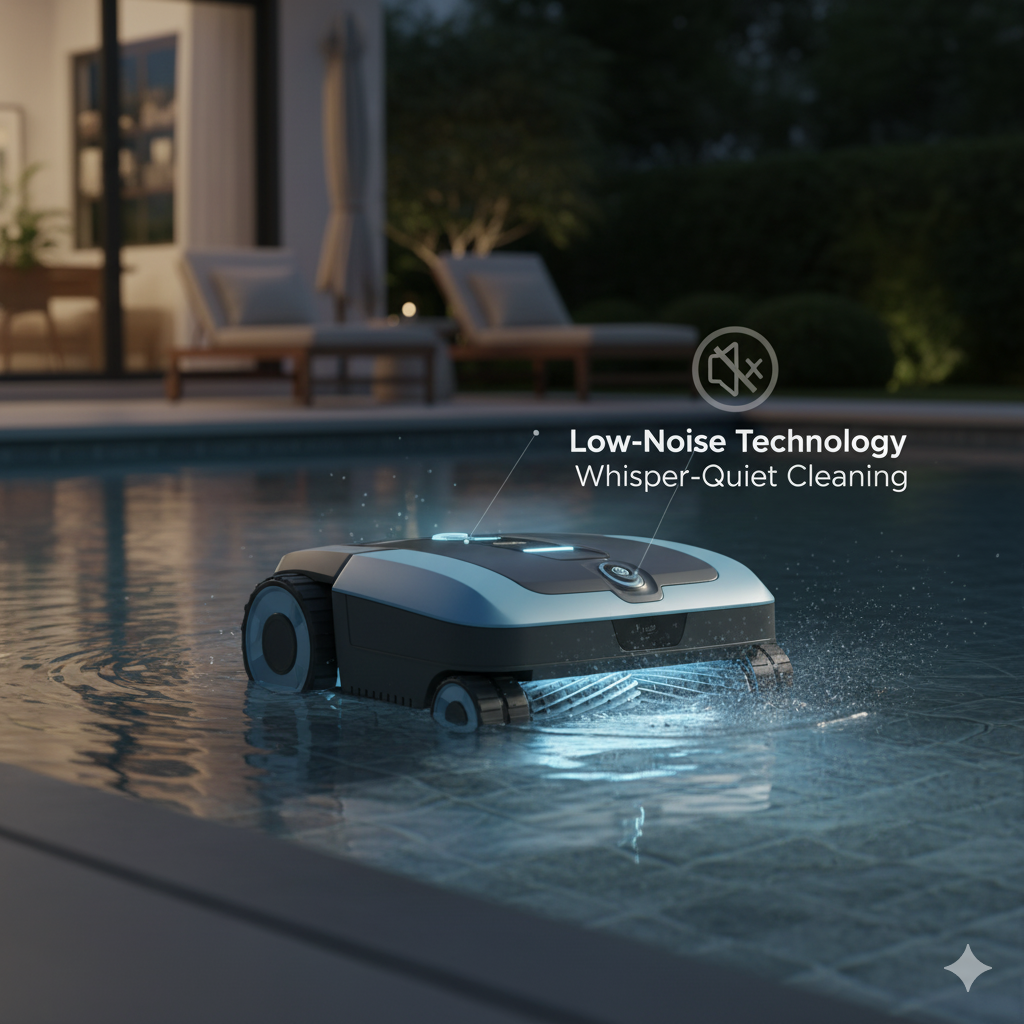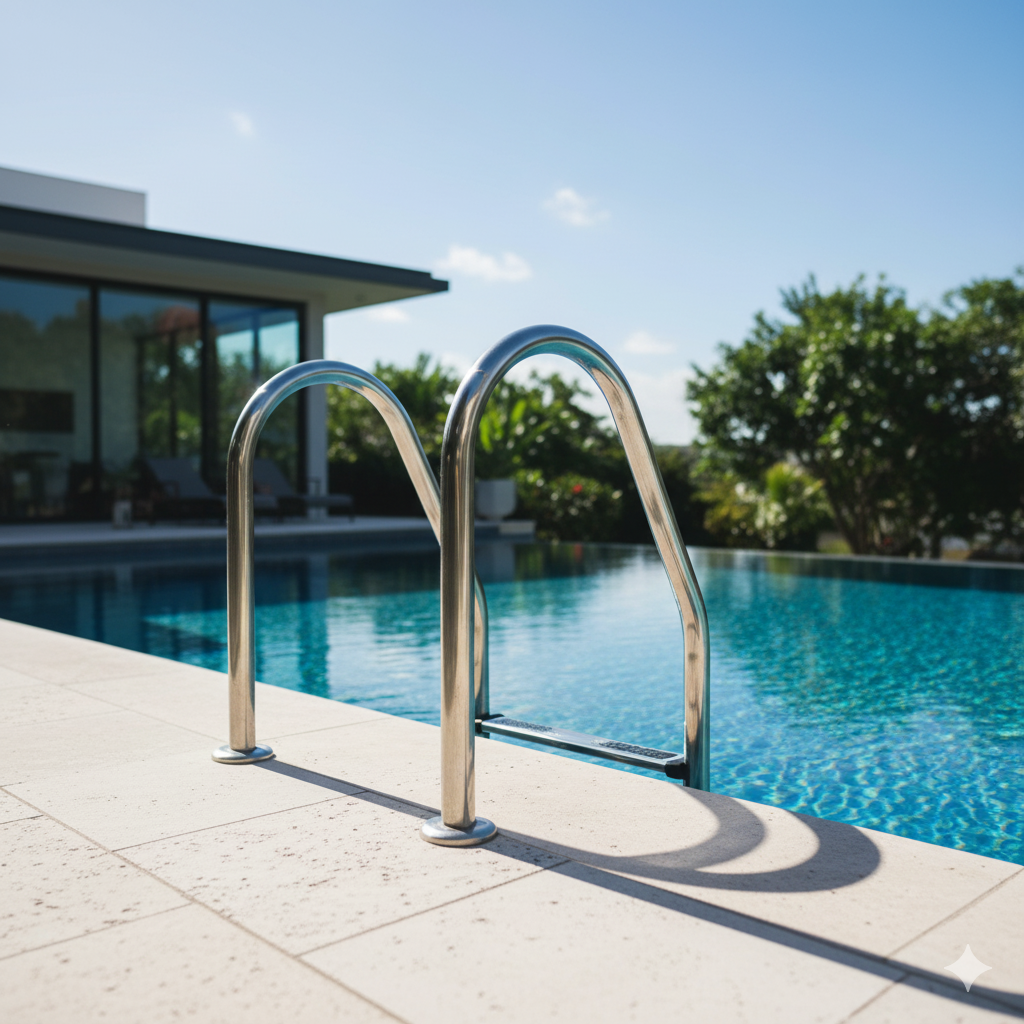
Spa Pool Cleaning Tools: Smart Design for High-Temperature, Compact Environments
Spa pools deliver comfort and relaxation—but behind that calm surface lies a constant challenge for maintenance staff.
Hot water accelerates bacteria growth, oils and lotions create surface film, and limited space makes cleaning physically demanding.
For operators managing wellness centers, boutique hotels, or resort spas, reliable spa pool cleaning tools are essential not only for hygiene but also for operational continuity.
Every accessory—from the smallest brush to the flexible hose—must perform efficiently in tight, warm, chemically active environments.
Understanding the Cleaning Dynamics of Spa Pools
Unlike standard swimming pools, spas are smaller systems with faster water turnover and higher contaminant concentration. The main issues include:
-
Oil film and foam buildup from bath additives and skin products.
-
Micro-debris accumulation caused by strong jets and constant bubbling.
-
Scale formation along water lines due to rapid temperature change.
-
Limited working space for cleaning staff or suction devices.
These conditions mean that ordinary pool gear—large vacuums, rigid brushes, or long poles—often underperform.
Effective spa tools must combine compact ergonomics, chemical stability, and fine filtration capability to maintain clarity without disrupting daily guest schedules.
Tool Categories and Functional Innovations
Professional spa cleaning equipment has evolved from household-grade tools to modular commercial systems. The main components include:
| Tool | Function | Design Highlights |
|---|---|---|
| Mini Vacuum Head | Removes sand, hair, and residue from spa floors | Weighted base with swivel connection prevents suction loss in small corners |
| Flexible Curved Brush | Cleans walls, seats, and contours | Dual-density bristles handle tile, acrylic, or fiberglass without scratching |
| Fine-Mesh Skimmer Net | Captures floating foam and small debris | Shallow frame for precise surface collection |
| Short Telescopic Pole | Extends reach inside compact tubs | Anodized aluminum shaft, anti-slip handle for hot-humid grip |
| High-Temperature Hose | Transfers debris to filtration system | Multi-layer tubing resists kinking and chlorine vapor |
| Chemical-Resistant Sponge Pads | Spot-clean jets and headrests | Soft texture maintains finish gloss while removing oil film |
Each item serves a precise purpose. Together they form a lightweight, quick-deployment cleaning kit—easy to rinse, drain, and reuse multiple times per day.
Maintenance Workflow: Step-by-Step for Daily Operations
A well-structured cleaning routine helps spas maintain consistent hygiene while minimizing downtime.
Typical workflow includes:
-
Surface Preparation — Skim the top layer to remove foam, hair, and leaves before draining.
-
Vacuum Cycle — Use a small suction head to remove sediment from seats and corners.
-
Scrubbing and Wiping — Gently brush curved areas and waterlines using soft dual-bristle brushes.
-
Jet Cleaning — Insert fine brushes or sponge pads into jets to remove oil buildup.
-
Final Rinse and Refill — Flush the system with fresh water, ensuring chemical levels stabilize before reopening.
Each step is made efficient when tools are properly sized and ergonomically designed—a difference that cuts cleaning time by up to 40% in busy spa facilities.
Materials That Make a Difference
Spa environments are unforgiving on materials: constant heat, chlorine vapor, and bromine exposure corrode standard plastics and metal parts.
That’s why professional-grade tools prioritize:
-
Anodized aluminum handles — Lightweight yet corrosion-resistant.
-
UV-stabilized polymers — Maintain flexibility and color despite high temperatures.
-
Silicone or EPDM seals — Prevent leakage and ensure smooth vacuum suction.
-
Micro-mesh nylon fabrics — Capture debris as small as 200 microns without tearing.
These choices directly impact durability. Cheap plastics may warp after weeks of use, while high-grade composites from specialized manufacturers can last entire seasons with minimal wear.
Selecting the Right Spa Pool Cleaning Tools
For procurement or facility managers, the decision should focus on long-term reliability, not only unit price.
Key selection criteria include:
-
Temperature and chemical rating – Always verify tools can tolerate 40 °C water and bromine systems.
-
Ease of use and portability – Lightweight designs improve staff efficiency during frequent cleanings.
-
Compatibility – Ensure universal hose and handle fittings for interchangeability.
-
Storage practicality – Compact kits save space in small spa maintenance rooms.
-
Supplier consistency – Partner with a manufacturer offering both pool and spa product lines for unified quality control.
When these standards are met, daily spa upkeep becomes smooth, fast, and predictable—critical for facilities with tight guest schedules.
Everyday Cleanliness, Professional Simplicity
Spa pool maintenance demands a gentle yet reliable touch. Tools that are too rigid damage surfaces; those too fragile won’t last a season.
Bonny’s spa cleaning product line is built around ease of handling, chemical resistance, and operational reliability—qualities trusted by wellness centers and hotels worldwide.
From soft-edge brushes to compact vacuums and fine-mesh skimmers, every tool supports effortless maintenance in high-temperature environments.
To explore Bonny’s complete range of spa and pool cleaning tools, visit the official homepage or contact us here for specifications, OEM options, and distributor support.






